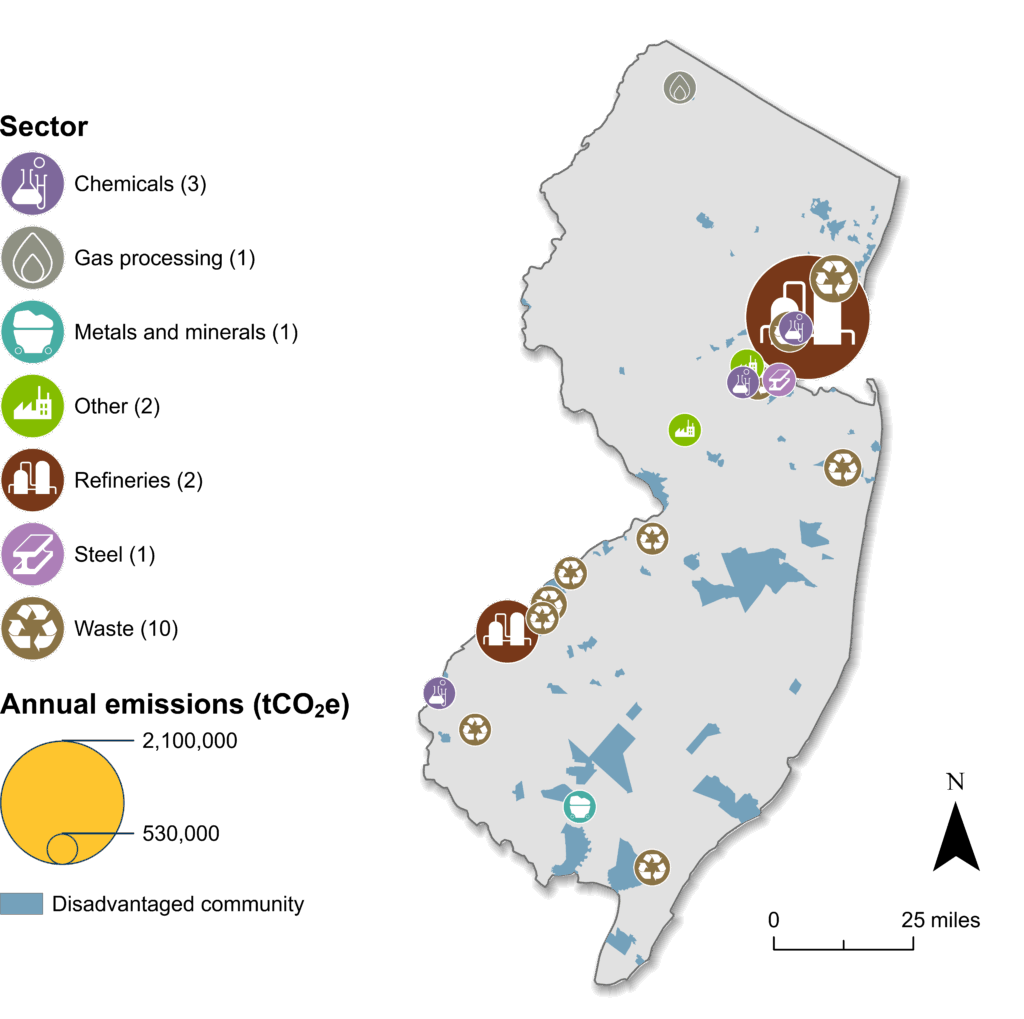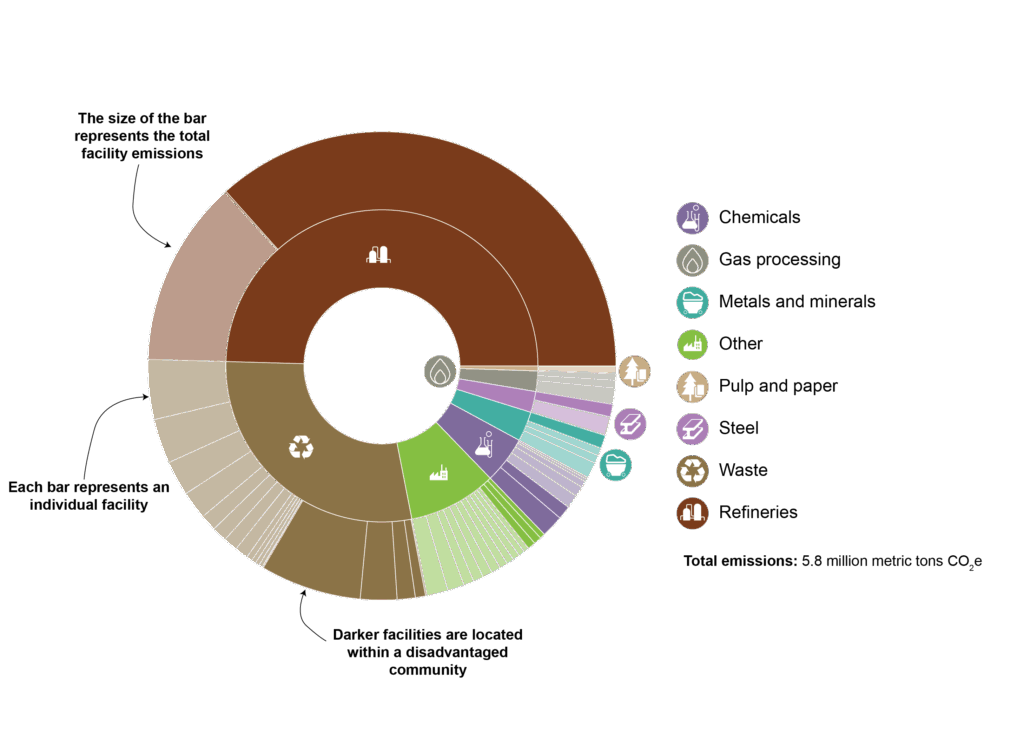New Jersey
New Jersey’s industrial emissions are higher than those in most Northeastern states. Excluding emissions from power plants, refineries and waste facilities account for more than half of industrial emissions. New Jersey is one of the major chemical-producing states in the Northeast region. Industrial activity is concentrated primarily in the northern part of the state in the greater Newark and Jersey City area. The Camden area in southeastern New Jersey is also an industrial center.

- The top 20 emitters are shown on this map, coded by industrial sector. The size of the circles corresponds to emissions: the larger the circle, the higher the emissions.
- Disadvantaged communities (as determined by the federal government) are shaded blue.

- The inner circle provides a visual representation of the share of emissions generated by each industrial sector.
- The outer circle also indicates the share of a sector’s emissions generated in disadvantaged communities.
STATE ENERGY POLICY:
Considering a state’s broader energy policy landscape is helpful when developing policies to support industrial modernization. New Jersey established executive greenhouse gas emissions targets (with additional interim targets enacted in 2021) and a renewable portfolio standard. New Jersey does not have a clean heat standard, but the state committed in 2023 to exploring it. While these formal commitments are not prerequisites for innovative industrial policy, they can provide a supportive framework. In addition, streamlining permitting and establishing an efficient, transparent appeals process that engages local communities early while giving clarity and assurances to project developers are key components of effective state energy policy. Discussions around innovative industrial policy present an opportunity for broader conversations about state energy policy to ensure a mutually reinforcing strategy.
LEGISLATIVE context & opportunity:
Let us know if you are aware of additional legislation advancing industrial innovation in New Jersey that should be featured. The context below is not exhaustive and serves as an example of recent policies and programs and where there may be future opportunities:
- Low Embodied Carbon Concrete Leadership Act (LECCLA): LECCLA was established by the enacted of S. 287 and A. 2234 in 2023. Provides tax incentives for low-carbon concrete and costs associated with conducting environmental product declaration analyses.
- Mid-Atlantic Clean Hydrogen Hub (MACH2): New Jersey, Delaware, and Pennsylvania are part of the Mid-Atlantic Clean Hydrogen Hub. Independent of the outcome of the regional hubs, there is strong interest in building a clean hydrogen economy in the region. New Jersey has identified hydrogen as a promising technology to reduce emissions across sectors, including industrial manufacturing. It has several recent initiatives to gather information and identify key opportunities and barriers in the state.
- Carbon management technologies are another opportunity to reduce industrial emissions in the state. Learn more about the economically feasible subsectors in Minnesota and facilities that qualify for the federal 45Q tax credit.
Explore recent legislation in New Jersey and all 50 states by clicking on a specific year: 2025 legislation, 2024 legislation, 2023 legislation.
